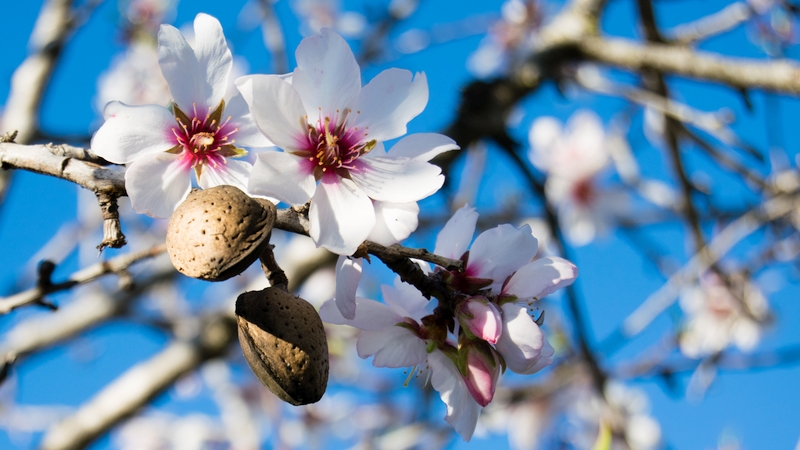Good Health News For Berry Growers
The good news from the medical, nutritional, and horticultural professions that berries are good for our health is a boon to all berry growers. That good news is joined by a concurrent rising interest by urbanites in buying locally produced agricultural products, including all berries, tree fruit, and vegetables. The new word “localvores” or “locavores” was developed that identifies such consumers of this growing purchasing trend. This double-barreled treat of good news should not be lost on growers interested in direct marketing within their local communities across the country!
Go into any supermarket and take a look at cereal boxes. Many show beautiful large color pictures of raspberries, blueberries, strawberries, or blackberries on the box fronts, as serving suggestions, even if they contain little or no actual dried fruit inside. Then consider that one cup of raspberries from your home freezer, on cereal or pancakes, or in a small bowl beside your egg-based breakfast, contains only 52 calories while adding 7 grams of dietary fiber plus 151 milligrams of potassium, plus a healthy array of health-enhancing antioxidants. Now look at the nutritional data of the cereal found on the side of the cereal box and realize how much you can fortify your breakfast just by adding one bowl of berries. We need to educate our local clientele about this good news.
Good Advice To Share
How do we prepare our fresh-picked berries for the freezer? If they are unsprayed and contain no organic or inorganic pesticides, nor show any bird droppings, we simply freeze them dry as they come from our fields. Otherwise, wet berries will freeze tightly together, forming a hard lump the size of your filled freezer bag, impossible to separate. Placing such wet-frozen berries in the refrigerator to thaw yields only a soggy, juicy mess. If you wash your berries before freezing, be sure to dry them as a single layer on a large cookie sheet, or freeze single layers first, then place the frozen berries into a freezer bag.
Our U-Pick customers tell us that our seedless grapes freeze when dry just as well as our blueberries, blackberries, and primocane late summer raspberries. We have not tried this, but check this out: 1 cup of seedless grape berries contains only 62 calories and yet contains a whopping 306 milligrams of potassium. One gram of dietary fiber is provided and we wonder if this is due to skins being discarded?
Most fruit also contain high levels of antioxidants in the skins or peels as well as the fruit, and we do note that our varieties have skins that, while tougher than western seedless grapes, are very flavorful and can be chewed easily then swallowed in order to receive that flavorful, extra punch of nutritional goodies. The antioxidant resveritrol is found in high levels in grapes, acclaimed by nutritional scientists to be a powerful tumor-fighter.
We have two varieties of reds that we recommend for our region based on our experience here: Reliance and Vanessa. Our two varieties of high yielding delicious blue seedless grapes are Jupiter and Mars, and our two varieties of seedless white are Marquis, which is a high yielder of delicious fruit for us, and Neptune, which is of low vigor at our site, but with small, high-flavored fruit.
On a related antioxidant note, older farmers such as myself can further benefit from these good fruit-enhanced breakfasts by adding soy milk to the meals. According to nutritionists, a cupful of soy milk adds powerful isoflavin antioxidant compounds important for fighting tumors for male prostate health. One 8-ounce cup of soy milk also adds 300 milligrams of potassium and 1 more gram of fiber for our health. With berries and soy milk, we’ve turned that drab bowl of plain cereal into a beautiful, colorful, nutritional powerhouse of healthy eating.
More Details Online
It is to our benefit to help educate our clientele about this good news! They will be standing in line for more of your locally grown berries. Web sites such as www.localharvest.org will post your farm on their site, by state, town, and your postal zip code. You can develop your listing with a couple of pages about your locally produced and marketed agricultural products with directions to your farm. Here at our Crow’s Nest Farm we are continually amazed by how many of our U-Pick berries clientele first found us from this growers’ Web site.
Their latest monthly electronic newsletter to participating growers featured a fine idea that you and your neighboring farmers might consider. A cooperative in northeast Iowa, for the last nine years, has marketed its wide range of enterprises to local institutions under a single brand name to schools including a local college, hospitals, and nursing homes in the area. The cooperative is not interested in participating in the traditional wholesale marketing channels. It caters to localvore-savvy institutions and stores in the community.
These 12 farm families produce and deliver an amazing wide range of products including berries, vegetables, apples, chicken, beef, pork, lamb, eggs, milk (goat and cow), herbs, flowers, honey, and baked goods, all under their brand. They cooperate instead of competing. For more information on this idea and about their operation and products from each of the 12 farmers, go to www.Grownlocally.com.
Yes, there are barriers to this type of idea, and regulations must be met, but they were not insurmountable to these Iowa farmers. We too can continue to use this good news to find new ways to produce and market locally!










